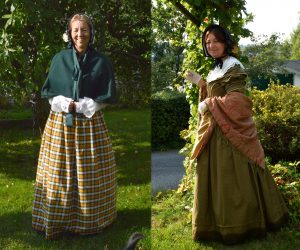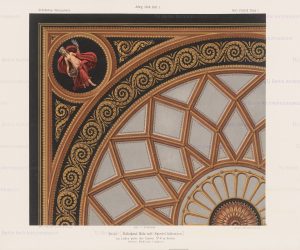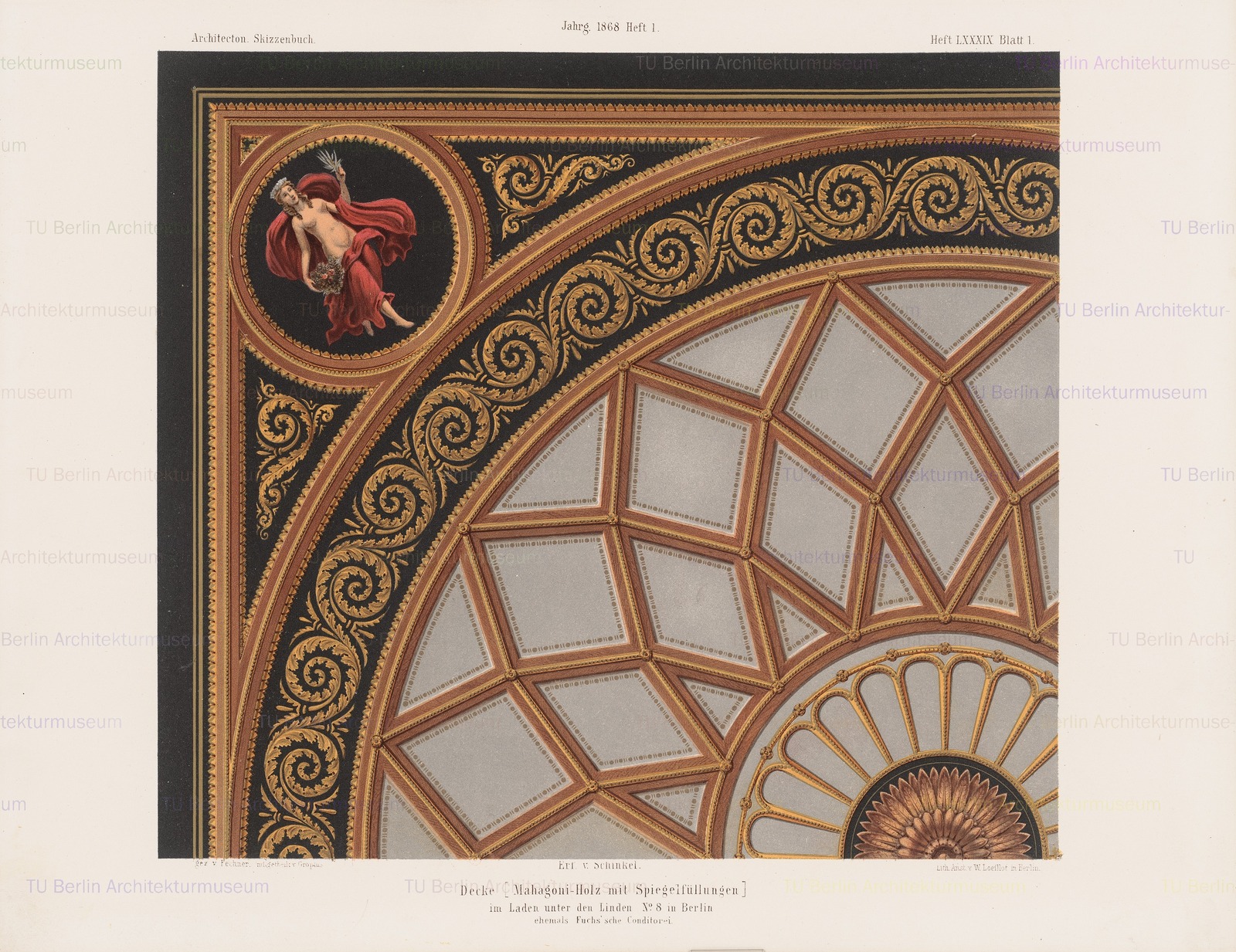
Ibland är jag envis, och kan inte släppa en till synes liten fråga. Så var det med caféet där Augusta åt glass i Berlin. Jag skrev om det för ett par veckor sedan. Jag vet mycket väl att 1800-talets hus i de flesta fall är borta, men jag ville ändå veta var caféet låg. Först trodde jag att det var en feltolkning av namnet på caféet, men när Sara hittade en bok av Sophie von Knorring, Bref till hemmet 1847, där även hon nämner Juchs sein caffe, trodde jag ändå att det var rätt stavning. Sophie var däremot inte lika imponerad som Augusta.
”Mycket trefligt, roligt och skönt hafva vi i det enskilda lifvet råkat på i Berlin; men det tillhör mera en förtrolig aftonstund att förtälja än beskrifva i bref, och af märkvärdigheter, Kunstkammer, Krolls etablissement, Juchs sein Caffe &c., frapperade mig blott den enorma salongen eller den så kallade vinterträdgården hos Kroll, allt utanför Brandenburgerthor och vid ingången till ”Thiergarten.”
Det kunde alltså inte vara stavningen som var fel. Jag har suttit på KB och läst resehandböcker, jag har sökt på nätet och jag har översatt olika benämningar av café till och från tyska och franska, Augusta slängde sig gärna med franska uttryck.
 Men så hittade jag en adventskalender från Berlin 1997.
Men så hittade jag en adventskalender från Berlin 1997.
Bakom lucka 12 hittade jag denna lilla notis. 15 december 1847 annonserar Konditor Fuchs på Unter den Linden 8 om att han ställer ut ”Scharaffenland” på julutställningen.

Nu öppnade sig en tysk värld på internet, tyska författare som beskrivit Fuchs Konditorei. Nu blev jag övertygad om att det var detta café Augusta besökte. En bild på en av kontitoriets utsmyckningar hittade jag på Berlins arkitekturmuseum.
Jag hade aldrig trott att jag skulle sitta och läsa Heinrich Heine på tyska, och ännu mindre att jag skulle översätta den till svenska. Men så blev det.
1826 skriver Heinrich Heine om Unter den Linden i sin skildring Reisebilder:
”Hier wohnt die vornehmste Welt Berlins. Laßt uns eilen. Das große Haus links ist die Konditorei von Fuchs…”
Här bor det förnämaste Berlin. Låt oss skynda oss. Det stora huset till vänster är Fuchs Konditori. Vackert inrett är allt där, överallt speglar, blommor, marcipanfigurer, förgyllningar, kort sagt den mest framstående elegans. ”
Men Heine är inte så imponerad, ”Man kan inte äta speglar eller sidengardiner”
I en historisk skrift om arkitektur i Berlin kan man läsa:
Arkitekt Stüler skapade ett exceptionellt vackert rum helt i schweizisk stil med sparrverk i taket. Väggarna är klädda med fyllningar och friser av olika fina polerade trävarianter, medan taket skyddas av lätta stödbjälkar med fin profilering.
Enligt skissen ovan var väggdekorationen gjord av mahogny med spegelfyllning.
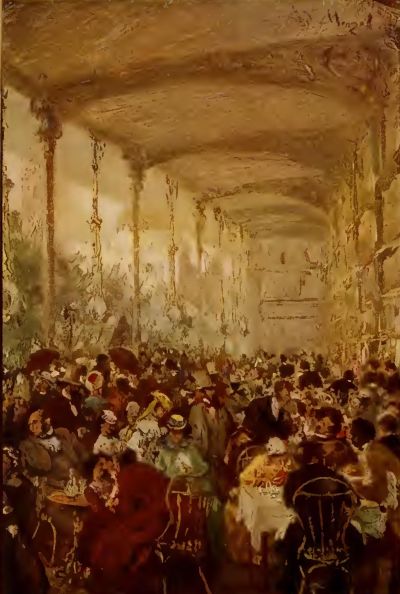
Julius Rosenberg, tysk författare, skriver i sin reseskildring 1887 om Fuchs glansperiod.
”Väggarna i ett rum är som spegelglas. Ett annat rum är fullt möblerat som ett schweiziskt hus.”
Och så såg tydligen Fuchs ut under fyrtio år tills Julius kom tillbaka på 1850-talet. Då var allt borta. Med vemod skriver han:
”Men ännu idag kan jag inte passera Unter den Linden, ett hus som idag är helt annorlunda, utan att det väcker en hel del minnen. Jag kommer ihåg vinterdagen när jag först kom till det här konditoriet, bländad av speglarna, det schweiziska huset och inte minst – Julutställningen. Det var ett nöje som man numera inte upplever.”
Och det var annonsen om julutställningen som ledde mig rätt så att jag fann Augustas caffé!
Och ett kapitält F och ett J är lätt att ta fel på med den snirkliga handstil man hade 1847. Så även förlaget där Sophie von Knorring gav ut sin bok, läste fel.
Bilder:
- Schinkel Karl Friedrich (1781-1841), Decke im Laden Unter den Linden 8, ehem. Fuchssche Konditorei, Berlin. (Aus: Architektonisches Skizzenbuch, H. 89/1, 1868): Ansicht Decke. Lithographie farbig auf Papier, 25,8 x 33,5 cm (inkl. Scanrand). Architekturmuseum der Technischen Universität Berlin Inv. Nr. B 3382.
- Dieses Bild befindet sich im Besitz der Stiftung Stadtmuseum Berlin und war vom 19. November 1997 bis 11. Januar 1998 in der Ausstellung Heinrich Zille – Zeichner der Großstadt im Ephraim-Palais zu sehen.
- Vossische Zeitung, 15.12.1847
- http://kunstmuseum-hamburg.de/wp-content/uploads/2015/09/Adolph-Menzel-Berliner-Weltausstellung.jpg
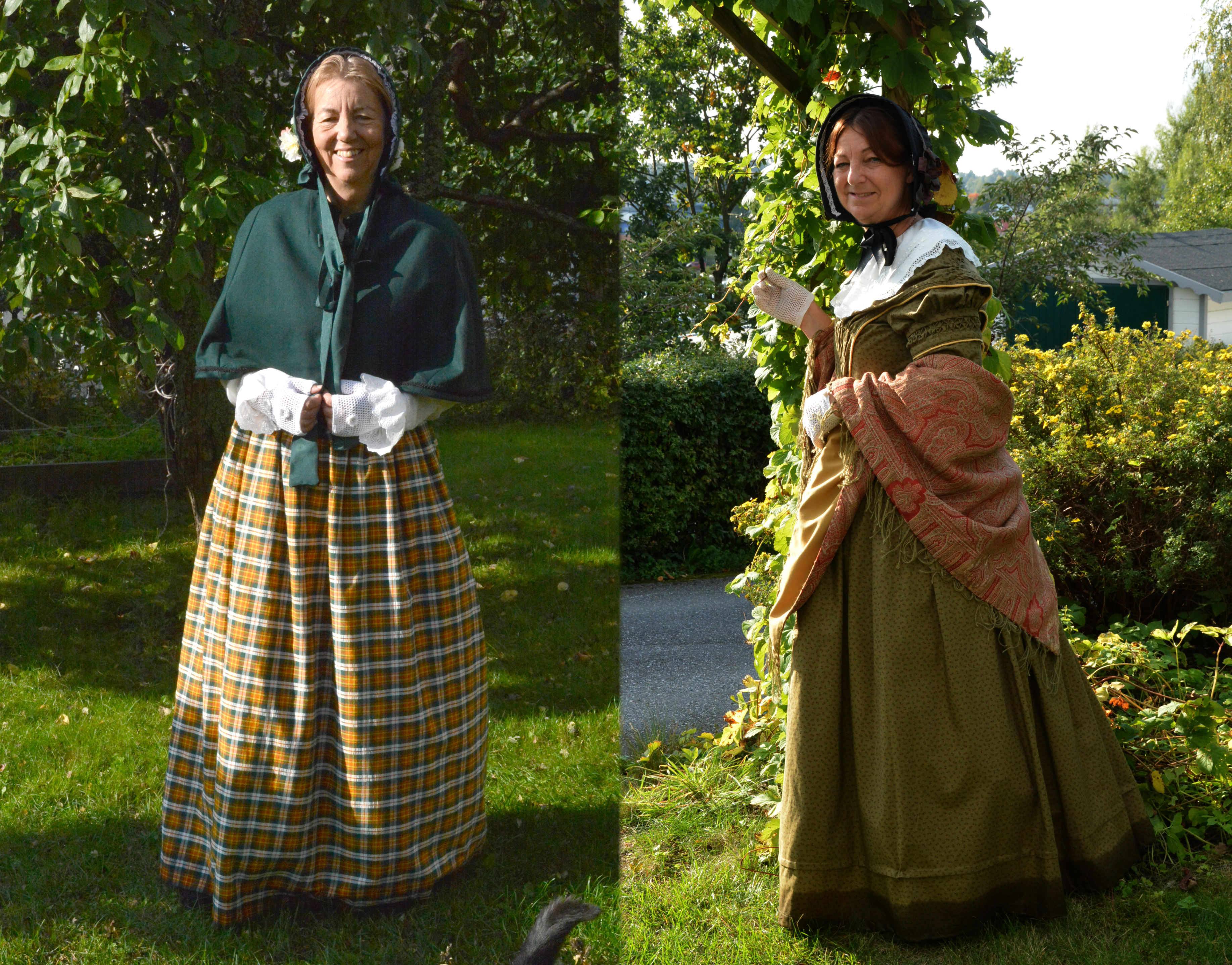 Imorgon, 28 september 2017, avreser vi från Stockholm Central med tåg söderut. Vi kommer besöka Lübeck, Berlin, Dresden, Bad Schandau, Prag och Hamburg innan vi vänder åter mot Sverige den 12 oktoboer. Vi kommer vara på resande fot i två veckor.
Imorgon, 28 september 2017, avreser vi från Stockholm Central med tåg söderut. Vi kommer besöka Lübeck, Berlin, Dresden, Bad Schandau, Prag och Hamburg innan vi vänder åter mot Sverige den 12 oktoboer. Vi kommer vara på resande fot i två veckor.
